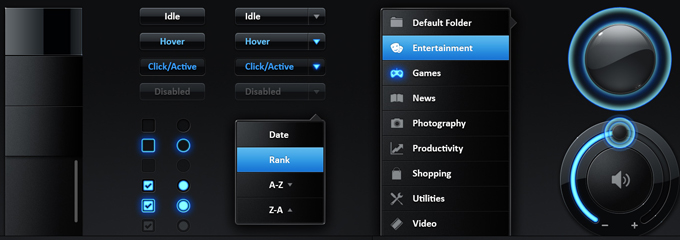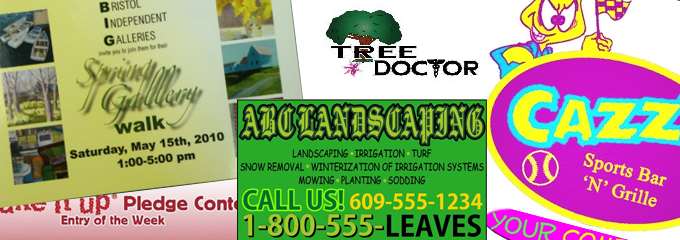Whether you’re seeking employment in a studio, or trying to bring in a few more clients for your freelance operation, one of the key components in doing so is your portfolio. As a designer your portfolio plays a large part in peeking interest and winning over those clients interested in your services, however a lot of portfolios fall short in achieving this and here are 7 reasons as to why that might be.
1. Presentation
Regardless of whether you’re printing out your portfolio, posting it on a website, or presenting it in person on a tablet, the general presentation of your portfolio needs to work with whatever environment it’s being viewed in.
If you’re printing your portfolio, the .jpegs that you posted on Behance aren’t going to be good enough. If you’re presenting on a tablet, a full-size .pdf isn’t the way to go. Maybe present a few zoomed-in crop-outs plus a reduced size version of the final product. Always tailor your portfolio to its environment.

2. Is There Context?
If you designed a poster for a local charity event and have it in your portfolio you should be including either a small brief on the project, its specifications & purpose, or several visual cues as to what the project was about such as photographs of the charity the poster was for, where the posters were displayed, etc. Despite the fact that you know the project inside and out, what it was for, and how it turned out for the client, whoever is looking at your portfolio likely has no idea who the project was for, what its purpose was, and whether it was successful or not.

3. One-Trick Pony
Are you guilty of falling into a pattern with your work? One thing designers will sometimes need to do (if they haven’t already intuitively realized it) is stop and take a look at their collective body of work as a whole. If everything is looking pretty similar maybe it’s time to shake it up and try something new. Branch out and take a crack at trying to emulate a style you never have before, take on projects you normally wouldn’t, and don’t be afraid of change! This isn’t to say people can’t make a living off of a particular ‘style’ however these are usually people who have already established their names in the community, and for designers trying to get their foot in the door it’s more often than not a deterrent for prospective clients/employers.

4. No CTA
Calls-To-Action are not only important for landing pages, flyers, or marketing materials, they’re useful anywhere you want to influence someone to perform an action of some kind. It’s basic logic that the mere act of telling someone to do something increases the chances of them doing it ten-fold. If you want someone to get in touch with you, if you want them to know you’re looking for clients, or looking to be employed, then indicate it in your portfolio. Not just pushed down in a corner somewhere in 9 pt Helvetica either, incorporate it in to the content of your portfolio, make it part of the content.

5. Irrelevant Content
If you’re applying for a job with an app company, make sure that your portfolio puts emphasis on your UI work and that it’s not filled with editorial spreads and book covers. Likewise, if you’re applying for a job with a magazine, make sure you’re including lots of editorial and typography work. Tailoring your portfolio for whatever industry you’re trying to break into may seem obvious but its a technique that can often be overlooked by designers with eclectic interests or skills (guilty!).

6. Inaccessible
Can people find your work? Do you have a website, and if so, is your portfolio buried in the depths of it somewhere? How easy is your portfolio to navigate? The best ways to make sure your portfolio is accessible these days is to either set up a Behance account or set up your own website and have the home page be your portfolio. For those who have no programming knowledge, you can always find a free or premium theme/template for one of the many popular content management systems available today (eg. WordPress). It’s also important to note that Behance is now owned by Adobe and is connected to a huge community of both creatives and employers and is a great way to get your work out there.

7. The Sad Truth
The last reason is the one that is the hardest to fix. Maybe the work in your portfolio is just not up to par with the companies you’re applying for or clients you’re trying to swing. In this case, the only way to change is to continue working on your craft. You’ve got to get better, and the only way to get better is to put in the hours.
To really get a sense of good design and understand why things are the way they are, I suggest researching into design history or the history of whatever niche you’re in for that matter. Everything you see today comes from something and it’s always beneficial to know and understand where that is and how it got from there to here. It also helps to understand why the “rules” of design even exist in the first place.

There You Have It
A few reasons as to why your portfolio may not be attracting the attention that you think it deserves. Hopefully it wasn’t too redundant, and you’ll be able to take these and put that polish on your collective work and finally get that job or client you’ve been after.
Products Seen In This Post:
Share on Pinterest Share on Pinterest
Share on Pinterest Share on Pinterest
Share on Pinterest Share on Pinterest
Share on Pinterest

7 Reasons Your Portfolio Isn"t Attracting Clients
No comments:
Post a Comment
Note: Only a member of this blog may post a comment.